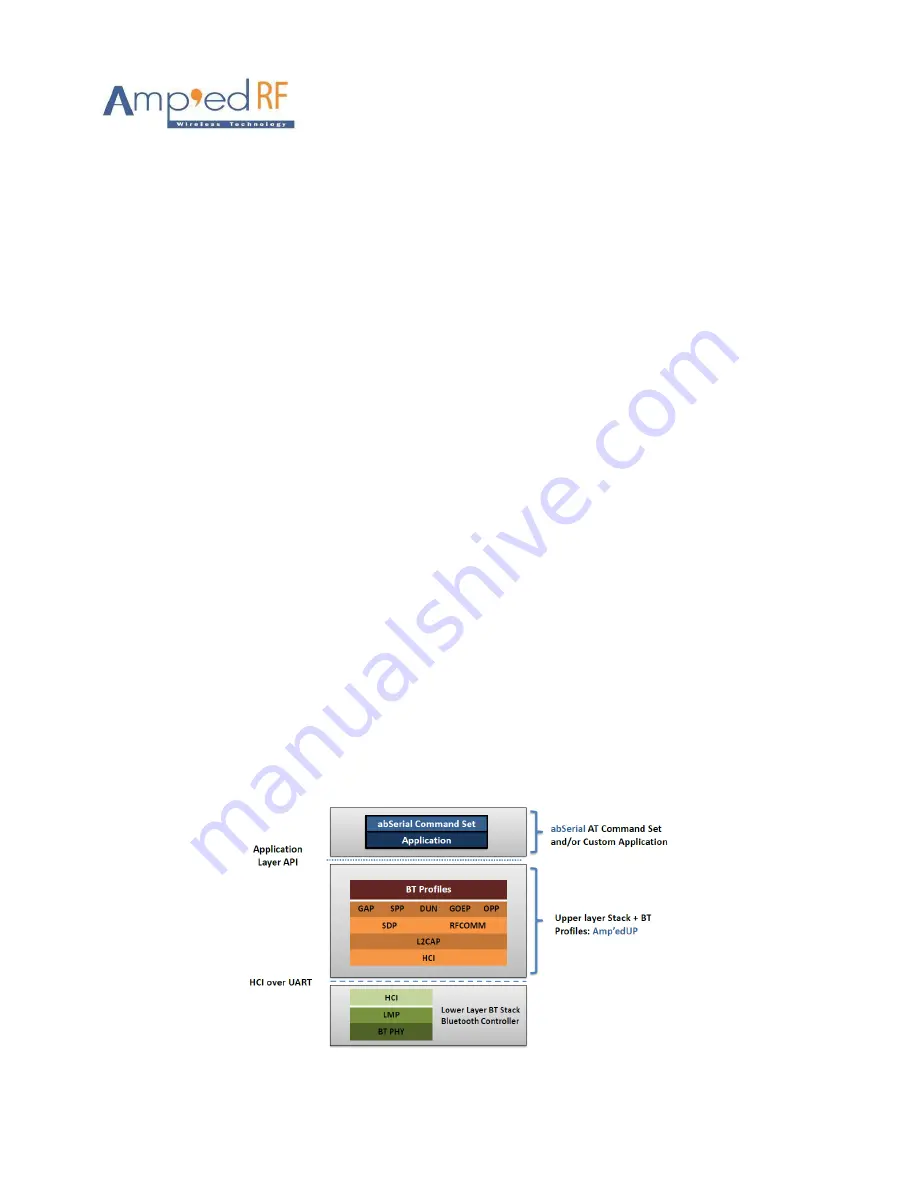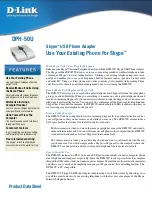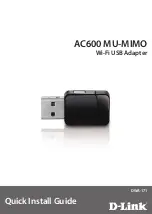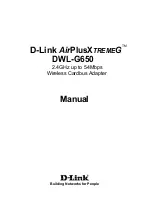
©2010 Amp’ed RF Technology Inc
1879 Lundy Ave, Suite 138, San Jose, CA 95131, USA
BT210 Datasheet
11/12/10 www.ampedrftech.com Page 3 of 6
Amp’ed RF Technology, Inc.
(phone) 408 213-9530
(fax) 408 213-9533
1.
Software Architecture
1.1
Lower Layer Stack
Full Bluetooth v2.1+EDR data rate (3M bps maximum)
Device power modes—active, sleep and deep sleep
Wake on Bluetooth feature—optimized power consumption of host CPU
Authentication and encryption
Encryption key length from 8-bits to 128-bits maximum
Persistent FLASH memory—for BD Address and radio parameter storage
All ACL (Asynchronous Connection Less) packet types (DM1, DH1, DM3, DH3, DM5, DH5, 2-DH1,
2-DH3, 2-DH5, 3-DH1 3-DH3, 3-DH5, AUX1)
SCO (Synchronous Connection Oriented) packet types (HV1, HV2, HV3)
Point to multipoint and scatternet support—3 master and 7 slave links allowed (10 active links
simultaneously)
Park, sniff, and hold modes—fully supported to maximum allowed intervals
Master slave switch—supported during connection and post connection
Dedicated Inquiry Access Code—for improved inquiry scan performance
Dynamic packet selection—channel quality driven data rate to optimize link performance
Dynamic power control—interference reduction and link performance
Bluetooth test modes—per Bluetooth specification
802.11b co-existence—AWMA and AFH
Vendor specific HCI commands—to support device configuration and certification test modes
1.2
Upper Layer Stack: Amp’ed UP
SPP, OBEX, SDAP, GAP, and DUN protocols
RFComm, SDP, and L2CAP supported
Multipoint with 7 simultaneous slaves
1.3
HCI Interface
Bluetooth v2.1 specification compliant
HCI UART transport layer (H4)
























